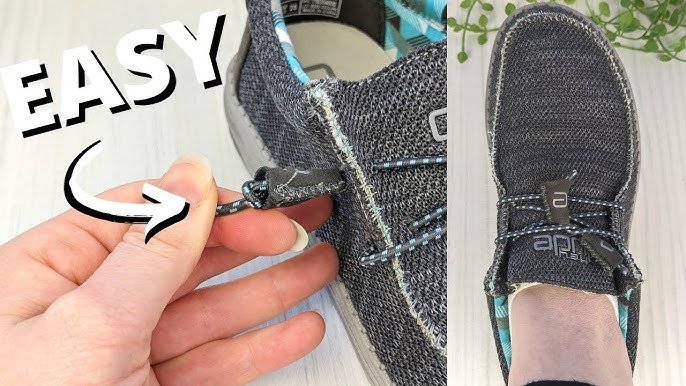Can you wear rain boots in the snow? It’s a question many people ponder when faced with wet and snowy weather. The short answer is yes, you can wear rain boots in the snow, but there are a few things to consider. Rain boots are designed to keep your feet dry in wet conditions, but they may not provide the same level of insulation as snow boots. However, with the right socks and layering, you can make your rain boots work in the snowy weather. So, if you’re ready to brave the elements and keep your feet dry, let’s dive in and explore how to rock those rain boots in the snow!
Can You Wear Rain Boots in the Snow?
When it comes to footwear options for snowy days, most people immediately think of snow boots or winter boots. However, rain boots can also be a viable option for navigating through the snow. In this article, we will explore the topic of wearing rain boots in the snow and discuss the pros and cons, as well as provide some tips for maximizing their effectiveness.
1. Understanding Rain Boots
Before delving into whether rain boots are suitable for snowy conditions, it’s important to understand what rain boots are made of and how they differ from snow boots. Rain boots, also known as wellington boots or rubber boots, are typically made of waterproof materials such as rubber or PVC. They are designed to keep your feet dry in wet and muddy conditions.
Materials Used in Rain Boots
Rain boots are primarily made of rubber, which provides excellent waterproofing properties. The rubber material creates a barrier that prevents moisture from seeping into the boots, keeping your feet dry even in heavy rain. Some rain boots may also incorporate PVC or other synthetic materials to enhance durability and flexibility.
2. The Pros of Wearing Rain Boots in the Snow
While rain boots may not be specifically designed for snowy conditions, they can offer several advantages when faced with a snowy environment.
Waterproof Protection
One of the main benefits of rain boots is their waterproof nature. Just as they keep your feet dry in rainy weather, rain boots can also keep snow from melting into your boots. This can be particularly beneficial if you often find yourself trudging through slushy or wet snow.
Easy to Clean
Unlike many other types of boots, rain boots are easy to clean. After a snowy day, you can simply rinse off the accumulated snow and mud from your rain boots, restoring them to their original state. This makes rain boots a practical choice for those who don’t want to spend a lot of time cleaning their footwear.
Versatile Style
Rain boots come in a wide variety of styles and colors, allowing you to express your personal style even in snowy weather. Whether you prefer classic solid colors or bold patterns, there is a rain boot out there to match your taste. Some rain boots even have removable liners, providing added insulation for colder temperatures.
3. The Cons of Wearing Rain Boots in the Snow
While rain boots have their advantages, it’s important to consider the limitations they may have in snowy conditions.
Lack of Insulation
Unlike dedicated snow boots, rain boots often lack insulation. This means that they may not provide enough warmth for extremely cold temperatures. If you live in an area with freezing temperatures or plan to spend an extended amount of time in the snow, you may want to consider alternative options with better insulation.
Limited Traction
Rain boots typically have a smooth rubber sole, which may not provide sufficient traction on icy surfaces. This can increase the risk of slips and falls, making rain boots less suitable for areas with icy or slippery conditions. Adding traction devices or snow grips to the soles can help improve grip, but it’s worth considering a boot with built-in traction for better safety.
4. Tips for Wearing Rain Boots in the Snow
If you decide to wear rain boots in the snow, there are a few tips and tricks that can help you maximize their effectiveness.
Layering Socks
To compensate for the lack of insulation in rain boots, you can wear thick, warm socks or layer multiple pairs of socks to keep your feet warm. Wool or thermal socks are excellent choices for added warmth.
Using Insoles
Inserting insulating insoles into your rain boots can provide an extra layer of warmth. Look for insoles made of materials like fleece or thermal insulation that help retain body heat.
Adding Traction Devices
To enhance traction on slippery surfaces, consider attaching traction devices or snow grips to the soles of your rain boots. These can provide better grip and reduce the risk of falls.
Pairing with Over-the-Calf Socks
Wearing over-the-calf socks can help create a barrier between your legs and the top of the rain boots, preventing snow from getting inside. This can keep your feet drier and more comfortable.
Choosing the Right Size
Ensure your rain boots fit properly to prevent discomfort and blisters. Consider trying on different sizes and styles to find the perfect fit for your feet. Remember to account for the thickness of your socks when selecting a size.
5. Conclusion
In conclusion, while rain boots may not be the first choice for snowy conditions, they can still be a practical option if you take certain factors into consideration. The waterproof nature and easy maintenance of rain boots make them suitable for lighter snowfall or wet, slushy conditions. However, in extremely cold temperatures or areas with icy surfaces, dedicated snow boots with insulation and superior traction may be a better choice for ensuring warmth and safety.
Ultimately, the decision of whether to wear rain boots in the snow depends on personal preference, the specific weather conditions, and the activities planned. By understanding the pros and cons, along with implementing the provided tips, you can make an informed decision and confidently wear rain boots in the snow when appropriate. Stay warm, dry, and stylish as you embrace the winter wonderland!
Icy Rain in LA? Finally a legit reason to wear rain boots! LOL #ootd #allblackoutfit #lagirl #over40
Frequently Asked Questions
Can you wear rain boots in the snow?
Yes, you can wear rain boots in the snow, but they might not provide the same level of insulation and traction as snow boots. Rain boots are designed to keep your feet dry in wet conditions, but they may not have the necessary insulation to keep your feet warm in the snow. Additionally, rain boots often have smooth soles, which can be slippery on icy surfaces. If you plan on spending a lot of time in the snow, it is recommended to invest in a pair of snow boots that are specifically designed for snowy conditions.
Is it safe to wear rain boots in the snow?
Wearing rain boots in the snow can be safe as long as you take some precautions. Keep in mind that rain boots are not designed to provide as much insulation and traction as snow boots. This means you may be at a higher risk of slipping on icy surfaces or experiencing cold feet. If you choose to wear rain boots in the snow, tread carefully on slippery surfaces and consider wearing thicker socks or adding insoles for extra warmth and comfort.
Can rain boots keep your feet warm in the snow?
Rain boots are primarily designed to keep your feet dry, but they may not provide sufficient insulation to keep your feet warm in the snow. Snow boots are typically insulated with materials like fleece or synthetic insulation to provide warmth and protect against the cold. If you are planning to spend prolonged periods of time in the snow, it is recommended to opt for snow boots that offer better insulation and warmth.
Are rain boots waterproof in the snow?
Yes, rain boots are designed to be waterproof, and they can provide protection against snow as well. They are made from materials like rubber or PVC, which are naturally waterproof and help keep your feet dry in wet conditions. However, keep in mind that rain boots may not provide the same level of insulation as snow boots, so your feet may still feel cold in snowy conditions.
What are the differences between rain boots and snow boots?
Rain boots and snow boots serve different purposes. Rain boots are designed to keep your feet dry in wet conditions, whereas snow boots are specifically designed for snowy and cold weather. Snow boots typically offer more insulation, warmth, and traction than rain boots. They often have features like waterproof materials, thicker insulation, and specialized outsoles for better grip on slippery surfaces. If you plan on spending time in the snow, it is recommended to choose snow boots over rain boots for better comfort and protection.
Final Thoughts
Rain boots are a popular choice for wet weather, but can they also be worn in snowy conditions? While rain boots offer some protection against moisture, they are not designed to provide insulation against the cold. In snowy conditions, a waterproof and insulated boot is necessary to keep feet warm and dry. Consequently, it is not recommended to wear rain boots in the snow. Instead, opt for winter-specific boots that are designed to withstand the lower temperatures and offer better traction on icy surfaces. Stay safe and comfortable by choosing appropriate footwear for the snow.






